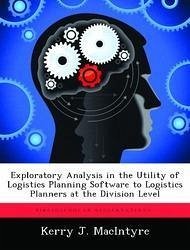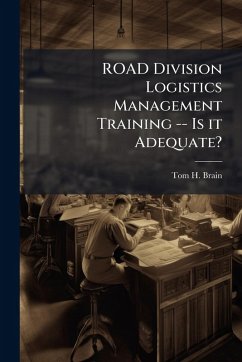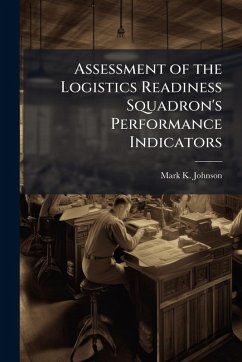
Exploratory Analysis in the Utility of Logistics Planning Software to Logistics Planners at the Division Level
Versandkostenfrei!
Versandfertig in über 4 Wochen
15,99 €
inkl. MwSt.

PAYBACK Punkte
8 °P sammeln!
This monograph examines the ability of the currently available logistics planning software, OPLOGPLAN '98 and the LEW '98, to assist the logistics planner in the creation of division level plans. To define the utility of the logistics planning software, this monograph examines the software's information production capacity and its communication ability. The intent is to determine if logistic planning software communicates critical logistics information to the division logistics planner and if the software helps to integrate logistics into the division planning cycle and division plans. The sof...
This monograph examines the ability of the currently available logistics planning software, OPLOGPLAN '98 and the LEW '98, to assist the logistics planner in the creation of division level plans. To define the utility of the logistics planning software, this monograph examines the software's information production capacity and its communication ability. The intent is to determine if logistic planning software communicates critical logistics information to the division logistics planner and if the software helps to integrate logistics into the division planning cycle and division plans. The software analyzed in this monograph is the only currently available logistics planning software, OPLOGPLN '98 and the LEW '98. Logistics planning software is evaluated individually for the software's ability to assist the logistics planner to support division planning and complete division plans using the military decision making process (MDMP). The monograph concludes that OPLOGPLAN '98 and the LEW '98, do not assist the logistics planner in the creation of division level plans. OPLOG and the LEW are models that calculate sustainment factors, not decision models. Both software programs are management information systems, designed to manipulate date and provide statistics. They both also have some elements of decision support systems, which provide analysis of information, but neither helps the logistics planner to frame the problem or define a solution. This work has been selected by scholars as being culturally important, and is part of the knowledge base of civilization as we know it. This work was reproduced from the original artifact, and remains as true to the original work as possible. Therefore, you will see the original copyright references, library stamps (as most of these works have been housed in our most important libraries around the world), and other notations in the work. This work is in the public domain in the United States of America, and possibly other nations. Within the United States, you may freely copy and distribute this work, as no entity (individual or corporate) has a copyright on the body of the work. As a reproduction of a historical artifact, this work may contain missing or blurred pages, poor pictures, errant marks, etc. Scholars believe, and we concur, that this work is important enough to be preserved, reproduced, and made generally available to the public. We appreciate your support of the preservation process, and thank you for being an important part of keeping this knowledge alive and relevant.












